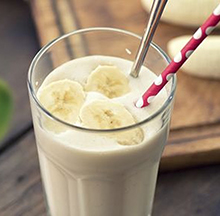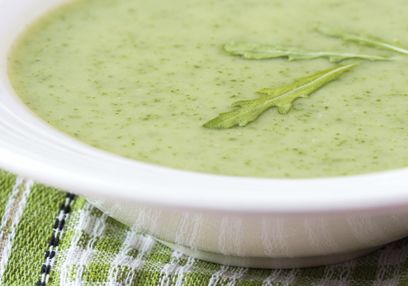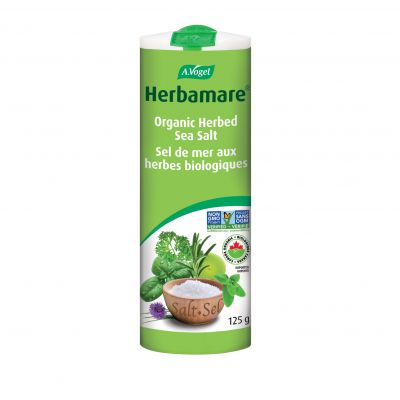Enjoyed without sugar and in small doses, coffee can actually have health benefits. But with giant cups becoming the norm at coffee bars, the average coffee tends to provide more than a healthy dose of caffeine. Are you a big or moderate coffee drinker?
Coffee and caffeine
Of the many studies on the health effects of coffee and caffeine that have been carried out, one finding is fairly consistent: it all boils down to quantity. Let’s start by defining what a portion of coffee is. The coffee cup used in the studies holds 237 ml. Drinking three of these cups a day is considered to be “moderate consumption.” As for caffeine, the maximum recommended daily dose is 400 mg.
There are many benefits to drinking a moderate amount of coffee, and some of them are surprising :
- Because coffee is very rich in antioxidants, it protects against free radicals. Unlike sugar, neither milk nor cream affects the body’s absorption of antioxidants.
- What antioxidants do is help stabilize blood sugar levels, which in turn helps prevent type 2 diabetes and breast and prostate cancers, while protecting neurons against Alzheimer’s disease.
- Coffee also helps prevent and relieve Parkinson’s symptoms, as well as cardiovascular disease.
- One cup of coffee (or tea) per day reduces the risk of stroke.
- It also cuts the risk of gallstones by 10%: by stimulating the flow of fluids in the gall bladder, coffee prevents cholesterol from crystallizing and becoming a gallstone.
However, when you consume more than 400 g of caffeine a day, the drawbacks begin to overtake the benefits:
- Coffee can make you irritable, so it’s especially important to go easy on it during PMS and stressful times.
- Because it’s a stimulant, coffee affects sleep—keep in mind that caffeine stays in your system for up to 14 hours after you’ve finished your coffee.
- It increases anxiety (even in small doses), so if you suffer from stress and anxiety, coffee is definitely not recommended for you.
- It increases blood pressure, something worth noting if you suffer from hypertension.
- It can cause acid reflux and heartburn.
- It affects calcium absorption and therefore does not promote bone health. People who suffer from or are at risk of osteoporosis should refrain from drinking coffee.
- It interferes with iron absorption.
Coffee affects some people more than others
According to Health Canada guidelines, pregnant or breastfeeding women, and women hoping to get pregnant, should limit their caffeine intake to 300 mg per day. Furthermore, a certain percentage of the population carries a genetic mutation that makes them break down caffeine more slowly than others. As a result, they feel coffee’s stimulant effects more intensely.
Take-out or home-brewed?
If you’re like a lot of Canadians, you’re used to buying your coffee ready made instead of brewing it up at home. If that’s you, watch out for portion size: at most specialty coffee shops, the “small” coffee is bigger than the standard 237 ml cup.
Caffeine content can vary widely from cup to cup, whether by coffee variety, preparation method (espresso or drip), grind size (fine or coarse), infusion time, water temperature and quantity, coffee origin and so on. To give you an idea, here is the average caffeine content for the most common types of coffee:
- Espresso (single): 89 mg/50 ml
- Percolator: 118 mg/237 ml
- Americano (typically two shots of espresso, diluted): 178 mg
- Drip: 179 mg/237 ml
Given the popularity of specialty coffees, researchers looked at variations in caffeine content in coffee from a range of coffee shops .
For espresso, caffeine content ranged from 58 to 76 mg for single shots and 133 to 185 mg for double espressos.
For drip coffee, the variations were even bigger: 143 to 259 mg for 476 ml (16 oz.) servings.
Note that the 16 oz. size is the same as Starbucks’ “grande,” Second Cup’s “medium” and a little bigger than Tim Horton’s and McDonald’s “medium” sizes.
To complicate things, these same researchers compared a cup of Breakfast Blend purchased at the same Starbucks outlet on six consecutive days. The result: from one day to the next, the caffeine content ranged from single to double, from 259 to 564 mg/476 ml. In other words, you can’t rely on size alone!
Coffee consumption in Canada
In Canada, average annual per capita coffee consumption is 152.1 litres, which is almost a barrel’s worth! Given the high concentration of Tim Horton’s shops (1 per 9,000 inhabitants ), you’d expect it to be the most popular, but that’s not the case; last October, Macleans Magazine published the results of a surprising survey that ranked McDonald’s’ McCafé first and Tim Horton’s fourth!
Unless you make your own coffee at home and drink it in moderation, you can’t just go by the number of cups you drink every day.
What are the signs you’re drinking too much coffee?
- You’re wracked with anxiety. Caffeine increases feelings of anxiety because of its action on cortisol, the stress hormone. When you produce too much of it, you experience more stress, anxiety, fatigue and other effects.
- You have trouble sleeping. This can mean that you have trouble falling asleep or that your sleep is fitful or disrupted, any of which can aggravate anxiety. Don’t forget: caffeine takes 14 hours to be eliminated from your system.
- You have headaches or migraines.
- You suffer from digestive problems: Coffee stimulates the production of gastric juices, which can cause discomfort, heartburn and acid reflux. What’s more, because coffee is a laxative, even moderate consumption can speed up your “output.”
- In large quantities, coffee becomes irritating and can lead to an increased urge to pee.
- Your heart is racing. Palpitations can be scary!
- You’re shaking. It may sound like a caricature, but coffee can make you shake so much that you can’t even hold a full cup of java without spilling it like lava.
How to cut down on coffee
If you’re used to having your coffee sweet, flavoured and creamy, start by cutting down on the extras. Some specialty coffees, especially those with flavourings and whipped cream, contain huge amounts of sugar and fat. In fact, they sometimes contain more sugar than your average soft drink, and that’s a lot! Have a regular coffee instead, the way you’re used to having it—I somehow doubt you stir four tablespoons of sugar into it!
Coffee is addictive. But if there’s an upside, it’s that the withdrawal symptoms are minor and short-lived compared to other addictive substances. You may feel tired and have headaches for two or three days, but that’ll be it.
If you cut down gradually, you probably won’t even feel the symptoms. However, try not to rely on decaffeinated coffee to make up for the daily cups of java you’re trying to eliminate. Decaf increases the risk of arthritis, an effect apparently linked to the solvents used to extract caffeine from the coffee beans rather than to the lack of caffeine itself.
You’d be much better off replacing your daily cup of Joe with a coffee substitute, herbal tea or simply water. Some coffee substitutes, with their smooth texture, flavour and slight bitterness, are convincing enough to satisfy even the pickiest coffee drinkers. And what could be better than a hot, comforting drink, minus the stimulating, stress-inducing side effects?






